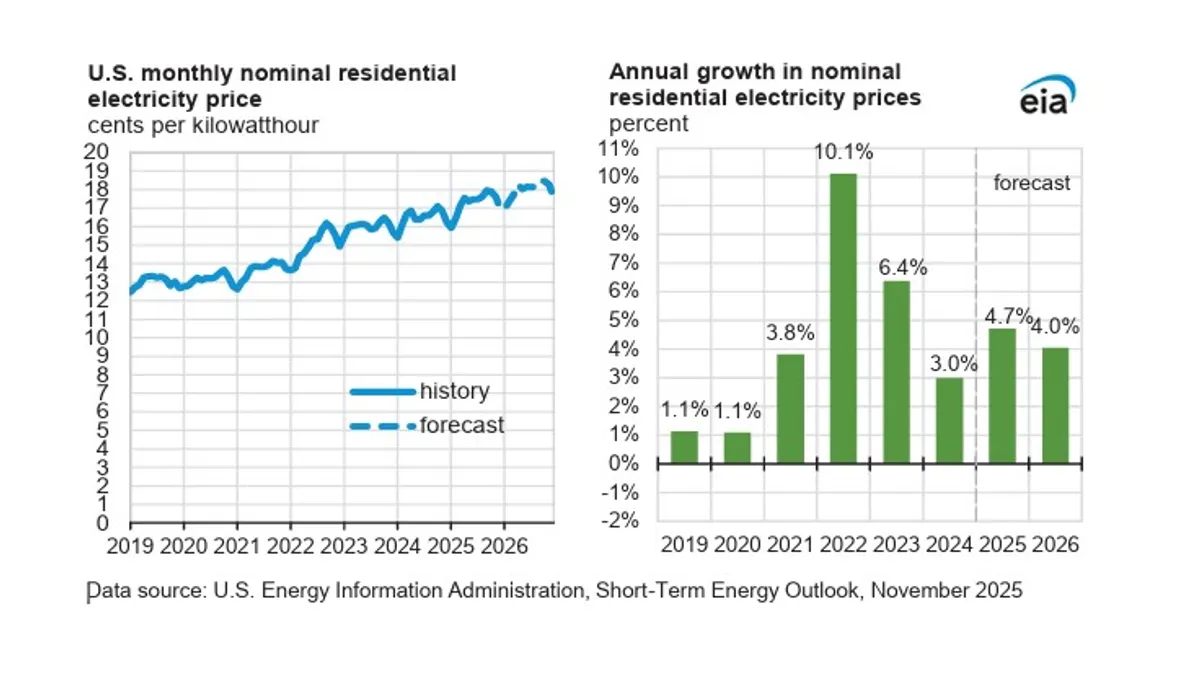The PJM Interconnection’s initial proposal for adding data centers to its system drew a range of concerns from the grid operator’s market monitor, independent power producers, utilities, data center companies and others, according to comments released on Aug. 29.
The issue centers on PJM’s fast-track stakeholder process to develop rules by the end of the year for interconnecting data centers to its system while ensuring the region has enough power supplies. PJM held a workshop on the issue on Tuesday and is set to hold the next meeting on Sept. 15.
In a first step in the Critical Issue Fast Path initiative, or CIFP, PJM staff on Aug. 18 released a conceptual proposal for tackling the issue. The proposal centers on treating new data centers over 50 MW as “non-capacity-backed load,” or NCBL. PJM would seek voluntary participation, but could require it if there is a capacity shortfall caused by large load additions.
Under the proposal, PJM could curtail power deliveries to data centers with NCBL status before the grid operator moves to pre-emergency load curtailments for other electricity users. In a benefit for NCBL data centers, they wouldn’t need to procure capacity in PJM’s capacity auctions.
PJM staff said the regional transmission organization is also exploring new demand response products for data centers and giving planned power plants priority interconnection reviews if they directly supply data centers.
Data center companies oppose NCBL
“It exceeds PJM’s jurisdiction, undermines the integrity of its market framework, introduces fundamental contradictions in tariff application, relies on unsupported assumptions, and lacks the detail necessary for customers to even evaluate technical and operational feasibility,” said the Data Center Coalition, a trade organization representing some of the largest players such as Google, Meta and Microsoft.
Amazon Data Services urged PJM to drop the NCBL proposal and instead focus on how to improve demand forecasting, strengthen regional transmission planning, improve the grid interconnection process and provide ways for data centers to voluntarily bring their own energy resources to the grid in exchange for faster load interconnection timelines.
The proposal isn’t viable, and will shift costs onto non-NCBL data center load, according to Monitoring Analytics, PJM’s market monitor.
It appears unlikely that data centers that want 99.999% uptime would accept having their load curtailed, Monitoring Analytics said.
“If PJM adds 10,000 or 20,000 or 30,000 MW of large data center loads, all without adding matching capacity, the expected frequency of interruptions will increase significantly,” the market monitor said.
Jurisdictional overreach?
Some power suppliers also panned the NCBL proposal.
Baltimore-based independent power producer Constellation Energy, for example, said it is riddled with legal flaws.
“They include: massive jurisdictional overreach by dictating the terms on which retail customers can receive retail service and eviscerating utilities’ state-law obligation to serve new load; the discriminatory manner in which the proposal targets new load with unjustified burdens; and the discriminatory manner in which it prevents existing generation from serving this load,” Constellation said.
The NCBL proposal appears to be a “premature, out-of-market reaction” to an inadequately defined challenge, according to LS Power. “That is the wrong approach if PJM hopes to maintain competitive markets and rely on those markets to maintain long-term reliability,” the company said.
LS Power said its modeling shows that PJM’s reserve margin will not go below 10% over the next several capacity auctions, a relatively common reserve margin in other regional transmission organizations.
“That begs the question — again, what problem is the CIFP attempting to solve?” LS Power said.
Exelon, which owns utilities across PJM, urged the grid operator to withdraw the NCBL proposal, partly because it invokes North American Electric Reliability Corp. standards to justify load curtailments.
“Nothing in the NERC reliability framework permits an RTO to pre-arrange routine load shedding of a designated customer class as a substitute for resource adequacy,” Exelon said.
Market impact
East Kentucky Power Cooperative warned that the NCBL proposal would effectively cap capacity prices, which could erode investor confidence needed to finance new power plants.
“The solution to the resource adequacy concern PJM highlighted in initiating this CIFP is not to further encourage load to connect in an undisciplined manner nor to disrupt the capacity market price signals,” the cooperative utility said. “The solution will require both PJM and the states to make changes focused on disciplining the large load connection to be commensurate with new supply additions.”
The governors from Illinois, Maryland, New Jersey and Pennsylvania said the proposed NCBL may be unpredictable and produce unintended results. More broadly, the governors called for more accurate load forecasting, interconnection improvements for “energy only” resources and resources that would supply large loads, and better regional transmission planning.
Like others, Advanced Energy United — a trade group for clean energy companies — said the NCBL proposal may not meet PJM’s goals and that filing a proposal with the Federal Energy Regulatory Commission in December as planned will be challenging given the complexity of the issue.
“A hasty, flawed proposal will fail to fairly balance the competing imperatives of accommodating large load additions expediently while protecting reliability and ensuring fair allocation of costs,” AEU said.
Data centers will shun PJM if they face a mandatory NCBL, according to AEU.
“These loads will seek to connect where they can either access capacity or have a clear pathway to access capacity in the future (presumably outside PJM.),” the trade group said.
The Electricity Customer Alliance urged PJM to break its CIFP initiative into stages, with the first focused on measures that could help stabilize prices in the 2028/29 base capacity auction set to be held in May.
Initial efforts should focus on load forecasting and on how large loads can supply their own generation, according to the advocacy group.
“This phased approach will meet the goals of the Board of Managers to address resource adequacy concerns both now and in the long-term while ensuring that any market design and market rule changes are well thought out and stakeholders have more opportunity for input,” ECA said.























